Here is a series of photos pulled from a super cool app called Essential Anatomy 2 (available in the App Store of course, for about thirty dollars).
This first one here shows three of the four rotator cuff muscles. Top to bottom: Supraspinatus, Infraspinatus, Teres Minor.
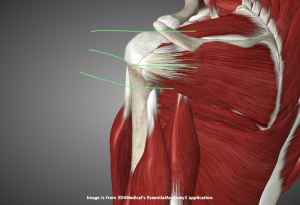
The next picture shows the fourth rotator cuff muscle, the Subscapularis (note that it is on the anterior or front side of the scapula while the others are on the posterior).
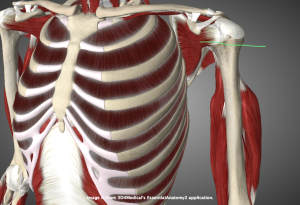
These next three series delve deeper into the shoulder joint, or glenohumeral joint. The first has removed all of the muscles and just shows connective tissue, bursa, and ligaments.
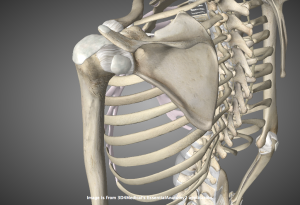
This next one has simply removed the numerous bursa.
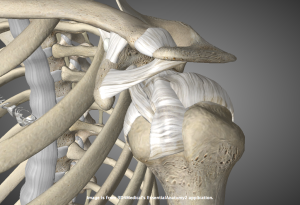
This has the articular capsule highlighted. No it isn't normally green. This is a very loose "wrap" around the head of the humerus and the point of articulartion with the scapula (shoulder blade).
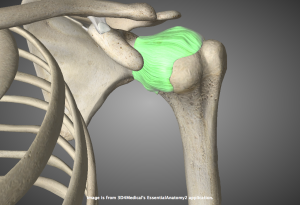
This final one has everything removed except the arm bone (humerus) and scapula and the labrum (green).
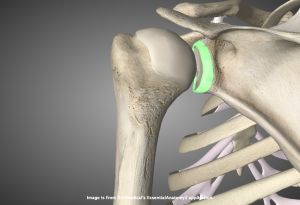
Which brings me to my point. You have a bunch of stuff that holds your shoulder together. The rotator cuff is muscle. It is not some idea or intangible concept. It is four muscles attaching your scapula and humerus together. And muscles can be strengthened. Your rotator cuff can be strengthened through proper training. Pressing overhead is one such way. Dead-hang pull-ups are another. Isolation exercises you may have been prescribed before are another.
Finally, the labrum. It is a little rim of cartilage that helps make the glenoid fossa bigger. The glenoid fossa is the little round part inside of the green labrum above. The smooth part (head) of the humerus articulates with the scapula at the glenoid fossa. It is pretty obvious that said fossa isn't very deep. It clearly does not envelop the humeral head. The labrum is that little something extra that helps hold everything together. Helps. Along with all that connective tissue and ligaments, and four rotator cuff muscles, and even indirectly some of the other big muscles that help move the arm (deltoid, etc).
So how do you injure this little labrum? Many a CrossFitter has done so, and there are several articles out there on the Web that talk about it. Sloppy technique with lots of exercises can cause all kinds of issues. Impinged tissues, muscle strains, swelling. Look at the shoulder. There is a lot of stuff in that area, including three bones that all this stuff is weaving around. But that doesn't necessarily injure the labrum.
In my experience, the kipping pull-up has the highest potential to injure the labrum. I'm not a doc y'all, or a PT, just an interested trainer and long time studier of strength that promotes the long term progress of those patronizing this gym. I have injured lots of my body through lots of hard and sometimes reckless training, but to my knowledge, my labrum is good to go. I personally know of a handful of folks in the broader CrossFit community that have and also that have at one point or another been a member of 21 CrossFit.
Every so often we get a new client that kips away and away on pull-ups but when it comes dead-hang time... they dead hang. This is a problem. Rewind a bit to the pictures. Their muscles that help do a pull-up aren't strong enough to handle their full bodyweight without a big kip from the hips and legs. Otherwise this person would be doing dead-hang pull-ups. Now, fast forward to where this not-strong-enough person has kipped, pulled, and successfully gotten their chin above the bar.
The down phase is where the really bad stuff happens. The poorly informed individual that sees other folks doing it, or the CrossFit Games athletes doing it, the same individual that isn't strong enough to handle their own bodyweight to pull themselves above the bar from a dead hang will use their entire bodyweight, plus downward momentum, plus forward momentum (gotta get that big forward swing, right?) to get ready for the next "pull-up." And then what. That momentum has to go somewhere. They've got to decelerate this moving body, stop it, and then accelerate it to propel themselves back above the bar. Sounds dangerous. If the muscles aren't strong enough to do it, what allows this to happen? The tough ligaments, the connective tissue, and ultimately the labrum that wants to hold all this stuff together! Does this not sound like a recipe for disaster? Do this once, not a problem. The body is amazingly tough at handling abuse. Do it a hundred times, do it regularly, do it when you are tired, when your shoulders are already sore... something is going to give. Something. Is going. To give.
Lastly, because I don't want to present a lopsided argument, kips are not all bad. If you have the strength to do regular pull-ups and the joint integrity that comes along with it, then kipping pull-ups are acceptable. Just understand that the kipping motion should be under control. It should not be wild and should not cause shoulder pain. I kip sometimes. If you aren't strong enough to do at least five dead hang pull-ups, you should abstain from kips and build up the dead hang using bands, negative, jumping, bands + weight, etc. And once you are strong enough, kips should never completely replace dead hangs. Never.
Well, I think you all get the picture. Take care of your body. And now hopefully you understand more about the way we do business at 21 CrossFit. We don't force or even generally recommend kipping pull-ups to folks. If you aren't strong enough to do a dead hang pull-up, don't let us see you kip. If you want to learn how to kip, we can teach you. There is more to the kip than meets the eye. There is more to the motion than I covered above, both benefits and hazards. Happy training! Thoughts?
Matt Crabtree is the owener of 21 CrossFit, a CrossFit affiliate in Durham, NC.
Images courtesy of Essential Anatomy, an app developed by 3D4Medical.com















































